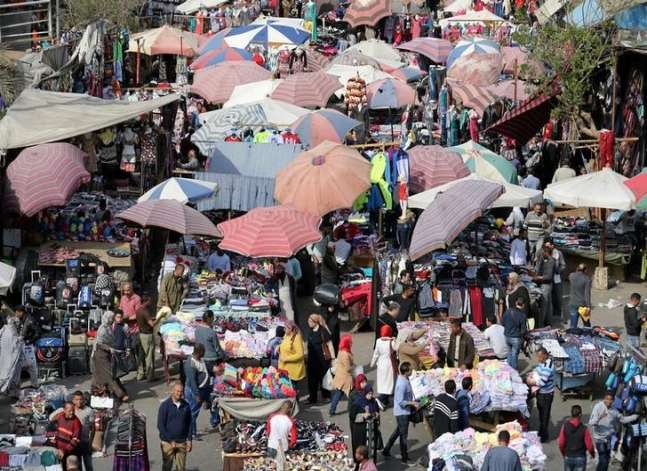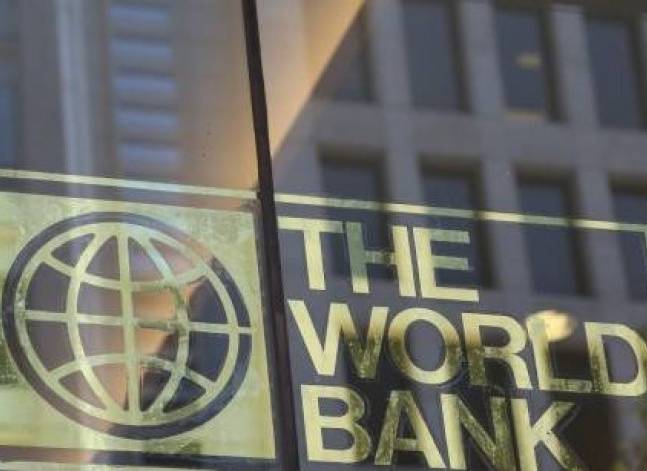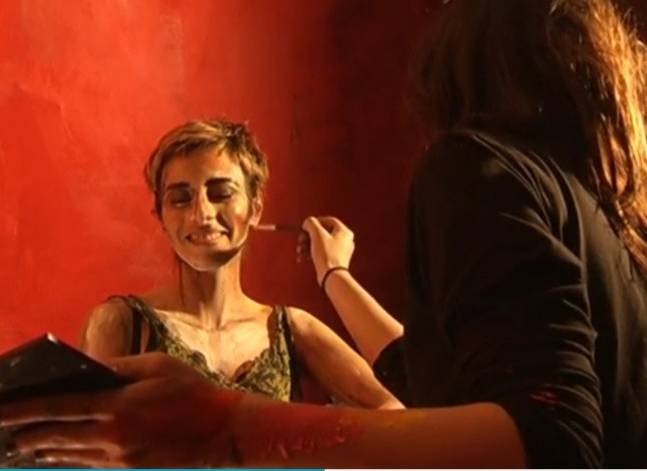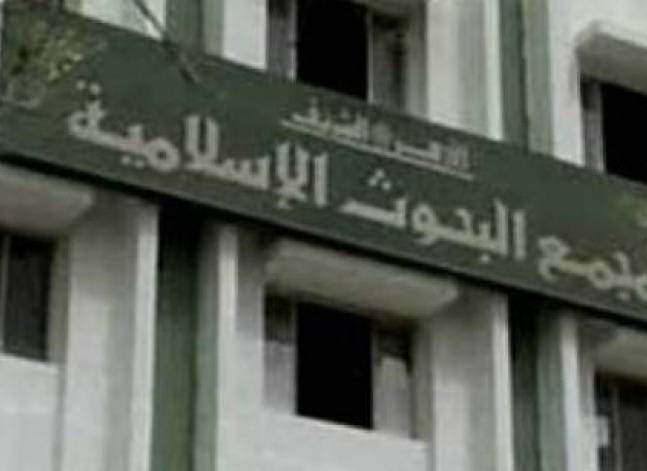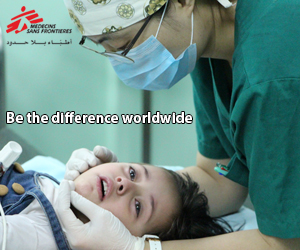Latest NEWS
- Aswat Masriya, the last word
- Roundup of Egypt's press headlines on March 15, 2017
- Roundup of Egypt's press headlines on March 14, 2017
- Former Egyptian President Hosni Mubarak to be released: lawyer
- Roundup of Egypt's press headlines on March 13, 2017
- Egypt's capital set to grow by half a million in 2017
- Egypt's wheat reserves to double with start of harvest -supply min
- Roundup of Egypt's press headlines on March 12, 2017
Guardians of the betrayed dead: Inside Cairo's Zeinhom Morgue

Men search for the bodies of relatives among the deceased supporters of deposed Egyptian President Mohamed Mursi, at a field hospital near the scene of clashes between pro-Mursi supporters and police in Nasr city area, east of Cairo, July 27, 2013. REUTERS/Asmaa Waguih
By Yasmine Fathi
A middle-aged man stands with a picture of his smiling son in his hand.He approaches a group of local men and gives them the picture.
“This is my son, have you seen him?” the man asks.
An elderly man in the group takes the pictures and looks at it closely. Then he waves at a 10-year-old boy.
“Mohamed, have you seen this one among the dead?”
The boy shakes his head and looks at the man.
“No, but there are bodies in the truck. Would you like to go have a look?”
The man shudders and moves away, telling the group that he will check at the police station first. After he leaves, Mohamed grins at the bystanders.
“I’ve seen the dead bodies and I am not scared. I don’t even have nightmares,” he boasts.
It may be a shocking statement for one so young. But not in a place that has seen so much death.
The path to Zeinhom
It's just a few hours after Cairo's latest bloodbath and dozens — some say hundreds — of victims have been brought here to Zeinhom, Cairo's central morgue, a grim breeze-block structure in the back alleys of Sayeda Zeinab, a working class district a handful of blocks south of Tahrir Square.
The front section of the morgue consists of a litter strewn yard where family members, waiting for news about their loved ones, have nowhere to sit but the dirt covered ground. While waiting, they crowd behind a window where a slight and balding man sits. One by one, they give him the name of their loved ones. The man directs them to a piece of paper, smeared with blood, that has the names of all the deceased who were identified. If the name is not on the list, the morgue employee may allow a family member to enter the chambers where they are keeping the bodies, to physically look for the missing.
Emotions run high in the corridors inside Zeinhom, a febrile mix of grief, disbelief and anger. Women sob and wail as coffins are carried out of the vicinity.
The capacity of the morgue is limited and this time the violence has left so many dead that bodies had to be laid out on the streets surrounding the morgue. When locals complained, delivery trucks were brought in and the bodies were put inside. The trucks, however, did little to quell the stench of decomposition forcing locals to pass wearing surgical masks.
Overwhelmed, morgue employees left locals to deal with the grieving families.
Hossam Ismail, a worker in a fast food franchise and a resident of the area, says the people living in the vicinity of Zeinhom were not shocked by this scene.
“We are so used to this here,” says Ismail. “The people of the area were raised with this. We all know what a dead body looks like.”
Indeed, the residents of Sayeda Zeinab may have seen it all. But even they admit that now is the worst.
“We never saw that many bodies before,” Ismail admits. “You do what you can. You try to help.”
This includes moving dead bodies from one place to another and openingthe trucks so that family members can climb up and see if their relatives are among the dead.
Death stream becomes flood
Zeinhom Morgue has always been a grim place. The morgue not only witnesses death every day, but the bodies brought in usually belong to people who met their end in suspicious and often gruesome circumstances. As part of Egypt’s main Forensic Authority, Zeinhom is also where autopsies and forensic reports are done.
Sheikh Said, the head mughasl (the person tasked with washing the body of a dead person, according to Muslim death rituals), says that the situation at the morgue changed rapidly after the January 25 Revolution.
What used to be a daily trickle of accident and murder victims became a torrent when Egyptians rose against Mubarak in early 2011.
“Before the revolution, they would bring the bodies of people who drowned, people who were stabbed. We would get five or six cases a day,” explains Sheikh Said. “But now, the flow of dead bodies is insane.”
Sheikh Said, a bearded burly man, stands in front of the morgue wearing a green shirt with “Zeinhom Morgue” written on the front. He talks about the first martyrs of the 18-day 2011 uprising that were brought to him to wash and prepare for burial.
“It was so sad. It broke my heart. So many of them were young,” he says. “I cried and still cry while washing the bodies.”
He says that he was the one who supervised the washing of the 74 young football fans who died in the Port Said Stadium massacre in February 2012.
“It’s always hard. The families of the martyrs are furious. They are angry from the violence. They are angry when there they come in and find the bodies of their children torn open for autopsy. They don’t understand that forensic medicine will bring them justice,” Sheikh Said says.
“One time I was washing the body of a martyr and I found one of his family members standing behind me and threatening me with a knife.”
“People criticise the morgue all the time. But we were the first to support the revolution,” he says. “The morgue is well equipped. Don’t believe anyone who says the conditions here are bad."
Inside the death house
Few would contest that morgues are the worst places on earth. At Zeinhom Morgue, however, corruption is so rife that martyrs have very little chance of getting justice. The bodies, the shell that remains of the revolutionaries, are often shown as little respect in death as they experienced in life.
It would have been a desperate situation if they were alone. But they are not. After every bout of violence, activists, lawyers, doctors and documentary makers converge on the morgue to stand by the families of the martyrs and fight for the rights of the deceased. They are the last friends the dead have. They don’t work there, but go in time of crisis.
They are in the morgue because others were unlawfully killed. In a way, they are Zeinhom’s conscience.
One of them is 30-year-old activist Nazly Hussein. Hussein found herself in Zeinhom for the first time after Essam Atta, a 22-year-old Egyptian, was allegedly tortured while detained in prison.
“I was shocked and felt that people see Tahrir Square and all it stands for, but they have to see the other side too,” Hussein says. “Here there is a lot of darkness.”
“I don’t know how I became a regular visitor to the morgue after that,” continues Hussein. “But these are difficult moments for the family and I felt that I had to go there and help."
From then on, Hussein would go to help family members who are trying to find the bodies of their loves ones deal with the oft-bewildering bureaucratic process needed to release the body for burial.
Nothing, however, could prepare her for the dire conditions inside Zeinhom. Hussein says that the morgue contained a room with drawers to keep bodies. But often bodies were thrown in another room that had double-level gurneys and was not refrigerated. Bodies strewn haphazardly, three or four on each gurney, with no regard. Family members who went to identify their loved ones often viewed dozens of corpses before they found who they were looking for.
“This room is horrible. The bodies are on the gurneys, but men are also thrown on the floor. It’s a tragedy, a real tragedy,” says Hussein.
“Egyptian culture teaches us to respect the bodies of the dead. But in the morgue, I never saw any respect in the way they deal with them.”
No comfort for the grieving
Hussein accompanied the family of Mohamed Shafie, who was killed during the clashes that erupted on the second anniversary of the Egyptian revolution, in their search for him at Zeinhom.
The morgue doesn’t make life any easier for the grieving families. Often, says Hussein, they have to make repeated visits before morgue staff admit that the body of their loved one is there.
Hussein and Shafie’s family sought the help of the Ministry of Justice and the prosecution general in their search. For one month, morgue workers looked into the eyes of Shafie’s family and denied he was there.
Finally, his uncle was allowed inside the storing room, where Shafie’s body was found among hundreds of others, lying on the floor of the morgue, in an advanced state of decomposition. It was almost impossible to recognise him.
“But his mother took one look at him and said this is my son,” says Hussein. “She knew in her heart that it was him.”
His distraught mother asked Hussein and several other activists to stand beside her for the ghusl, the Islamic cleansing ritual that precedes burial.
“Shafie had no face, no features. If the fridge was better, this wouldn’t have happened,” said Hussein.
Later, activists discovered that the morgue had a photo album that included pictures of Shafie taken when his body first arrived.
“Why would they let the families go through this awful experience when they had this photo album?” asks Hussein. “It is an awful experience. The families have this horrible trepidation as they go through the process. They go with their legs shaking. Why do they have to enter a room like this, when there are photos available?”
Hussein does her best to help family members go through this brutal process, but without an official position, she often feels lost.
“My place there is ambiguous,” she says. “I feel that loud voices work. So I shout and raise my voice. But once they ask me who I am, well I am no one really.”
Now anyone who needs information about the morgue goes to Hussein.
“I don’t like taking these trips,” smiles Hussein. “But I feel that we all stood together for the same dream. And some of us died for that dream. I have to be there with them. My presence with the family makes a difference.”
Last friends of the dead
Another activist who found himself a frequent visitor to the morgue is Mahmoud Zaghloul.
“Once you enter the morgue, the stench hits you,” he says. “And the smell of blood; there is always a smell of blood.”
Zaghloul, has lost count of how many times he has visited Zeinhom.
“The family of the dead don’t have the ability to deal with all the complicated procedures needed to release the bodies of their loved ones,” he says. “So you go and stand by them. You do what you can.”
Zaghloul watched the ghusl of one slain protester and was horrified by what he saw.
“They pull and throw the body,” he says. “The mughasl’s clothes are covered in blood. I’ve seen butchers deal with bodies better than this.”
Human rights lawyer Amr Imam has also made repeated visits in the morgue over the past three years. He stood by family members as they went through the legal procedures needed to release the bodies of their loved ones. He was there with the families of many of the protesters who died, including Sheikh Emad Effat and medical student Alaa Abdel Hady, both of whom who were killed during clashes between the military and protesters in the transitional period after Mubarak’s ouster.
“The morgue is unsafe, it is filled with corruption,” he says. “There are many unidentified bodies of protesters who were never claimed.”
Imam, who also accompanied families to identify protesters, was shocked to enter a room crammed with bodies.
“Their were more than 100 bodies, all thrown one on top of the other,” he says. “I believe this is the room where they put all the bodies of the people they don’t want identified. They hide the bodes because they don’t want to admit that they killed so many. It’s better to say that there were only 10 victims instead of dozens and dozens.”
Human rights activists demanded that the prosecution investigate, says Imam, but to no avail.
Zeinhom: Barrier to justice
The morgue is tasked with producing forensic reports for all the victims brought in. But families say the reports are full of fabrications, with vital evidence omitted from the final copy.
“When the report is fabricated, whatever lawsuit we have goes down the drain,” Imam explains.
Fights also erupt at the morgue when distressed families refuse that autopsies be performed on their dead relatives.
“They think that the body will be completely torn apart during the autopsy,” he says. “But this is not true of course. I would say 70 percent of families refused to have an autopsy done. This is part of our culture — the idea that a dead body should not be touched.”
Lawyers and activists are then tasked with trying to explain to families that the autopsy is important and would bring justice for their loved ones.
Walking through piles of dead bodies is not something that Imam thought he would ever do. “The people who work in the morgue, the forensic doctors and others have the psychological training to deal with what they see inside,” he says. “I don’t.”
However, he and his colleagues plough on, because they feel it is their duty.
“It has a reached a point where we make appointments with each other at the morgue,” Imam says, shaking his head. “Zeinhom has become a part of our lives. The morgue and the corpses inside."
Power moves in the shadows
Many doctors who sided with the revolution also find themselves making regular trips to the morgue. Surgeon Mohamed Fattouh, often volunteers to attend the autopsies of victims to ensure maximum transparency. He also describes the deteriorating conditions inside the facility.
“The tools they use are primitive, they belong to another century,” Fattouh said. “The technicians do most of the autopsies. They are skilled and fast, but on a scientific level I doubt they know what they are doing.”
The staff of the morgue are often also under pressure to report findings that parallel what authorities want.
“In one case I attended, security forces were on the phone with the forensic doctor conducting the autopsy, telling him what to write in the report,” says Fattouh. “It is obvious, they are not independent.”
During this incident, the doctor told Fattouh and others that he found a bullet lodged in the head of one of the victims and that the bullet would be sent to the lab in Zeinhom to be analysed.
“Then the security forces had a talk with him,” remembers Fattouh. “And all of a sudden, we were told that no bullet was found. Obviously the doctor was given instructions to change his testimony.”
Magda Adly, a physician at the Nadeem Centre for the Rehabilitation of Victims of Violence, was also dragged into the dark corners of Zeinhom in the days after January 2011. She was asked to attend the autopsy of the murder of seven protesters shot dead in the governorate of Beni Suef during the 18-day uprising. The investigation began after the protesters were buried and forensic doctors from the morgue were transported to the burial site to exhume the bodies. What happened then shocked Adly.
“We went to the graves. “The morgue officials had no equipment and asked the families to dig up the bodies of their loved ones, by themselves,” remembers Adly. “It was cruel, very cruel.”
After the bodies were brought out, the doctors couldn’t find surgical scalpels or thread to work with.
“We are talking about LE1 surgical scalpels. They didn’t even have that. Just the silliest things,” she says.
The team also had no camera or x-ray machines to conduct the autopsies.
Bodies break down, facts disappear
Back at the morgue, the lack of proper freezers to preserve the body causes a lot of problems.
“When decomposition begins, the features disappear,” explains Adly.
“The skin colour changes and the blood goes to the nether parts for the body, turning them blue. It becomes impossible to tell if this blue is a result of a beating or just a result of decomposition.”
This, she says, leaves doctors frustrated.
“Your job is to do a preliminary screening of the body and if the doctor feels that there are signs of a crime, then they are supposed to inform the prosecution which will then order an autopsy,” says Adly. “If the body decomposes, this is impossible.”
Another group dragged to the morgue repeatedly in the past three years are documentary makers who want to record the victims of the violence.
Cressida Trew, a British documentary filmmaker, has also made repeated visits to the morgue to document defining, bloody moments in modern Egyptian history.
“Filming at the morgue is the hardest filming I’ve ever done,” Trew says. It is a very difficult thing to do.”
As a filmmaker, Trew’s presence at the morgue has to be subtle.
“You don’t know the person who died and you don’t know their family, but you are there, and the family is grieving and not just grief but the worst grief you can imagine,” says Trew. “But at the same time, you feel that this is an important moment and it has to be borne witness to.”
If she and likeminded colleagues don’t make a record, Trew fears events will be lost and written out of Egypt’s history.
“When you're there, you are on constant knife's edge,” says Trew.
“Should I pick up the camera or should I not? You are trying to figure out what is the best way to respect the dead: by picking up the camera and documenting this, or by just leaving?”
Sometimes family members are keen for their anguish to be recorded. Fellow filmmaker Aida El-Kashef was standing at the entrance to the morgue during the Mohamed Mahmoud Street clashes in November 2011 when a father of one of the victims dragged her into the room where the bodies were kept.
“He was screaming. He pulled me with my hands and started opening the drawers that held the dead. One after the other, while shouting at me to tape,” El-Kashef says.
El-Kashef often went to the morgue to support families who were battling with the administration on forensic reports. But this was the first time she entered the chamber where the bodies are kept.
“It was the first time I saw dead people. You see these things in horror movies and then they are right there in front of you,” she remembers. “I was crying while videotaping. I couldn’t continue and I ran out.”
As hard as it gets, El-Kashef feels that it is her duty to be there. “It’s my job. I have to be there to stand by these people,” she says.
Egypt's saddest story
The morgue is the saddest story in Egypt. While Tahrir Square represents hope and joy for many revolutionaries, the morgue is the opposite side of that coin. The side that very few get a glimpse of. The bullets and gas don’t just take the lives of the protesters, but also that of their loved ones whose lives will be forever changed.
Trew remembers the moment nightfall set in following another deadly bout of clashes in November 2011. Families had left and a cleaner was sweeping tissue papers and bloody gloves — all that was left of the tragic day.
“And then I walked past this car. It was very dark and I could just hear the sound of sobbing coming from inside,” says Trew. “This was for me the worst moment. This is when you realised that after the drama and after the shock, this is what the families will have to live with for the rest of their lives."
Additional reporting by Bassem Abo Alabass




